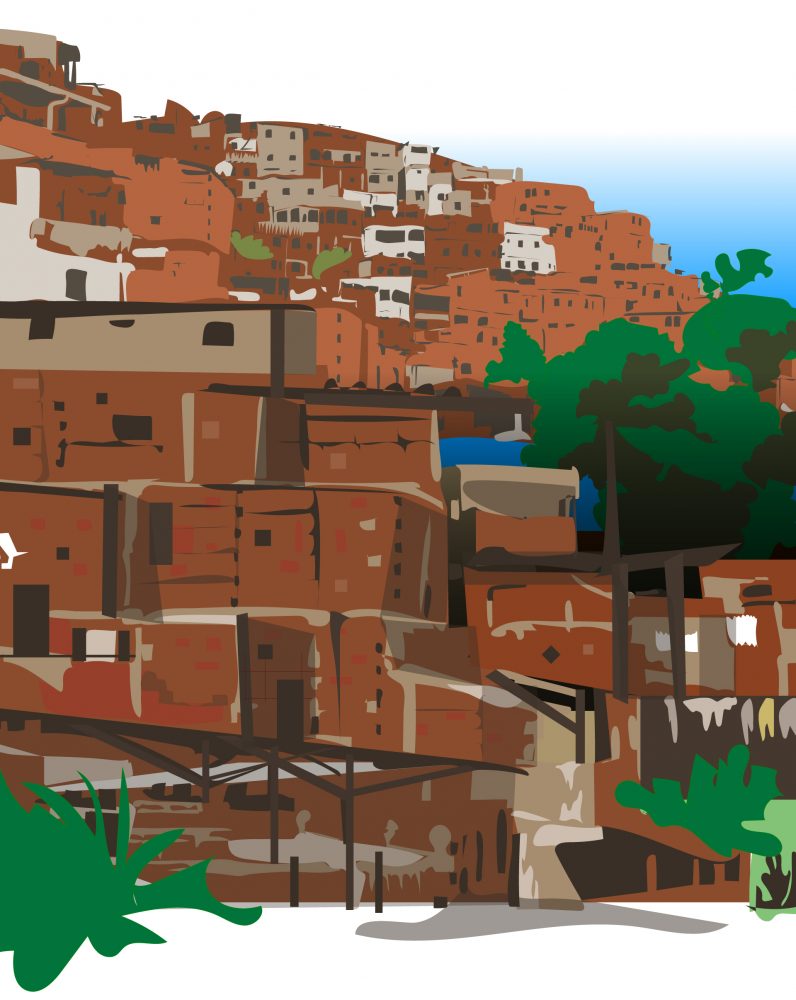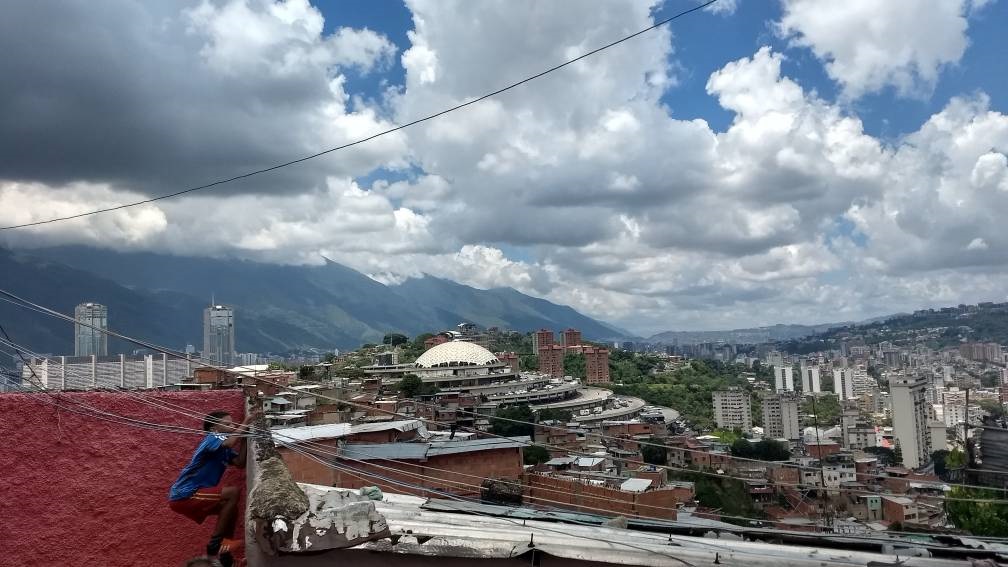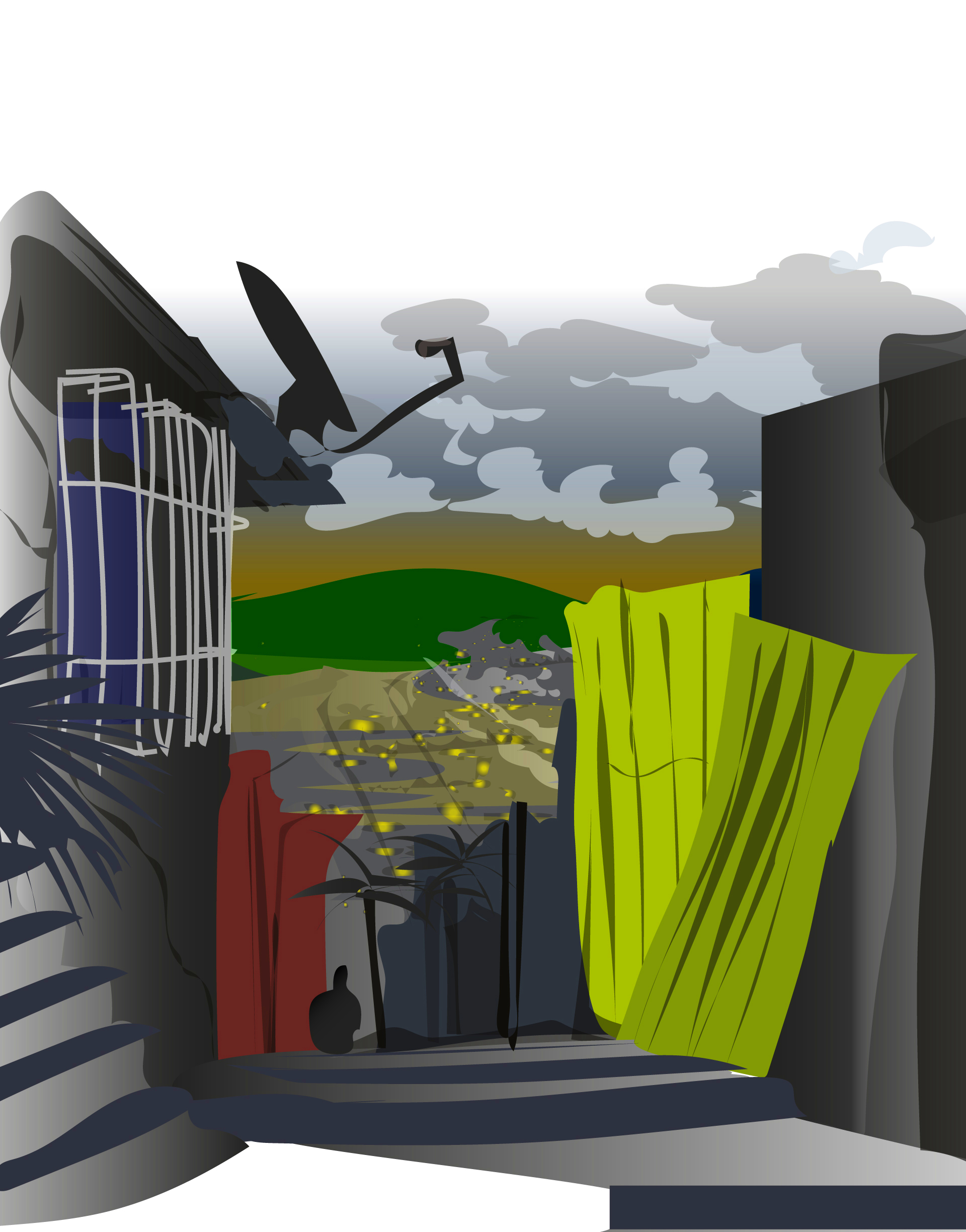Interview with Verónica Zubillaga, conducted by Yoletty Bracho
What is the role of violence in the barrios and in the daily experience of working-class people in Venezuela? Where does it come from, and how does it spread and multiply?
First, one can distinguish three types of violence in working-class districts: structural violence, interpersonal armed violence, and institutional police violence. Structural violence refers to all of the social conditions underlying the urban marginalization and social, political, and economic exclusion that many Venezuelans have to face. It includes the dynamics that produce inequalities based on social status, skin color, and neighborhood, amongst others.
This type of inequality prevents people from accessing basic public services, such as transportation, water, and electricity, as well as fundamental economic and social rights such as housing, education, healthcare and employment. Through my work with the REACIN network (Activist and Research Network for Social Cohesion), of which I am a member, I have observed that structural violence operates insidiously, disrupting the daily lives of its victims and destroying their futures in the long term. It also determines the survival strategies adopted by the social groups affected, especially young men, who are often forced to turn to the informal sector and even to the illicit economy.
“Weapons ‘slipped through the fingers’ of police and military officers”
There has been a significant proliferation of firearms in Venezuela, more precisely during the politically and socially conflictual times that accompanied the political process known as the “Bolivarian Revolution”. According to the reports released by the Presidential Commission on Firearm Control and Disarmament (to which I contributed), most of these weapons were legally imported into the country. They then “slipped through the fingers” of police and military officers, ending up in the hands of young gang members, organized crime groups, and illicit trade networks more generally, due to the connections between these entities.
The proliferation and circulation of firearms among those living in extreme poverty has led to the emergence of highly violent social dynamics. For instance, conflict over the control of territories linked to illicit markets – such as the drug trade – translates into interpersonal armed violenceand has produced mainly casualties[mfn]From 1999 to 2009, according to official figures, homicide rates increased from 25 to 49 per 100,000 inhabitants. In 2016, a year after a deadly wave of militarized police operations, the rate had reached 70 per 100,000, the highest in Latin America after El Salvador.[/mfn], mainly among poor young men.
The presence of heavily armed criminal groups has led to increasingly lethal responses from law enforcement authorities and fueled an escalation in violence. This cycle of violence is the result of the heightened militarization of public security policies, characterized by policies known as Mano Dura,[mfn]“Strong hand” or “heavy hand”. The term is used to refer to tough-on-crime police practices. More information about these policies can be found in the interview with Keymer Ávila.[/mfn] which have fueled a growing prison population, among other effects. As a response to this tough-on-crime policy, gangs – mainly comprised of young men from working-class districts – have joined forces in order to acquire more weapons and form more sophisticated organized criminal groups.
“Venezuela currently has one of the deadliest police forces in Latin America”
Their inter-organization has triggered an escalating armed response from law enforcement, which contributes to the deployment of large-scale and lethal violence, turning public authorities into actors of illegitimate violence. Extrajudicial killings are encouraged in these kinds of situations. This is the third type of violence: institutional police violence.
In the post-Chavez era, this institutional violence – mostly inflicted through Mano Dura policies – underwent significant change. From 2015 onwards, such change becomes evident: on the one hand, police operations became more militarized, amounting to mass invasions of working-class districts; on the other hand, the policy of disproportionate incarceration of the residents of those districts shifted toward a policy of pure and simple execution.
The observation that can be drawn from these dynamics highlights how Venezuela currently has one of the deadliest police forces in Latin America. This situation was recently documented in studies carried out by researchers from several countries in the region, and in reports by the United Nations High Commissioner of Human Rights and the Independent International Fact-Finding Mission on Venezuela.
In such a dramatic situation, how do the residents of working-class districts deal with this violence in their daily lives?
In the working-class districts of the city of Caracas, which are the main focus of REACIN’s research, life is defined by intense, small-scale social interaction in communities where everyone knows each other. It is a life built of exchanges, favors, and mutual assistance that compensates for a chronic lack of justice and protection from public authorities. The management of violence in these districts is thus intrinsically linked to each neighborhood’s social dynamics.
We use the term “armed territorial order” in our work to reflect the fact that within a city, manifestations of violence are historically, spatially, and socially situated. They should be analyzed in light of the history of each barrio’s communities and their relationship to the police; they vary depending on the type of armed actors active in the community.

In the neighborhoods closest to the city center, we have observed that a minimum standard of coexistence is maintained by the residents and armed groups of young men. This mutually shared standard has been adopted in the different sectors of the Carache barrio[mfn]A « sector » is an internal division of the barrio. It is an informal division that tends to overlap with territorial and social limits: for instance, it takes into account the notion of “community” as a unit of mutual social experiences. The names of the districts have been changed to protect anonymity.[/mfn], where we have conducted long-term ethnographic studies. It takes the form of a community rule forbidding attacks on neighbors in the same sector of the barrio. The “sector” has thus become the new border determining the members of a geographical community, between whom the use of violence is restricted.
As a result, the relationship between young armed gang members and their neighbors can be described as a continuum, ranging from open hostility to tense coexistence, and even exchanges of favors: gang members offer residents protection, while residents shield gang members from the police. In districts where civil society organizations are well-established, residents are able to reach this type of basic agreement with the gangs because they have more leverage and therefore greater influence within the power relationships that define the use and the regulation of violence.
In this context, what is the role of law enforcement authorities? In other words, how does the state contribute to the production of violence in working-class districts?
Mano Dura policies in Venezuela have contributed to turning district gangs into organized criminal groups – a phenomenon already observed in other countries such as El Salvador. Over time, as a consequence of those policies and of the persistent lack of welfare state programs, those armed groups have become prominent informal political forces. More recently, law enforcement policies have led to the mass incarceration of poor young men from working-class districts, which have encouraged gangs to organize and join forces to fight police, especially in the La Caracola barrio a group of neighborhoods in which we have recently conducted research, extending from the city center to the south of Caracas.

Police forces and public authorities began to stigmatize this barrio, calling it the Corridors of death. By doing so, they justified a series of militarized interventions called “Operation for the People’s Liberation” (OLP in Spanish). On July 13, 2015, the first day of the OLP, at least 14 people were killed in La Caracola. From 2015 to 2017, communities were subjected to weekly raids, during which heavily armed policemen in balaclavas broke down doors and forcibly entered homes. Our investigation showed a significant number of extrajudicial killings, together with the systematic theft of residents’ belongings and other forms of police brutality.
The communities in La Caracola havethus found themselves trapped between organized criminal gangs and law enforcement, two equally tyrannical armed groups. In this difficult situation, local residents have been forced to side with local criminal groups. In return, criminal groups grant them certain favors while subjecting them to their authority, in order to ensure the neighborhood’s loyalty and protect themselves from law enforcement.
What role do women play in the experience and the management of violence in these districts?
As part of our ethnographic observations for REACIN’s research, we emphasize the central role of women in the micro-politics of the barrios. We focus on the role played by mothers in developing strategies to compensate for the lack of state protection in highly violent situations. In order to protect their families, women have resorted to a wide range of tactics, from resistance to collaboration with armed groups. Those practices can either limit violence or amplify it. They form the basis for the political survival strategies to which these women dedicate much of their social and psychological resources.
“If a young man does not respect the basic rules of community life, his reputation may be tarnished by word of mouth”
Conversational and rhetorical resources play a key role in these strategies: threats to call the police are one of the most widespread tactics, even when they are not carried out. But the ultimate mechanism by which young armed men are controlled is gossip. If a young man does not respect the basic rules of community life, his reputation may be tarnished by word of mouth, which may lead to his being reported to the police or reprimanded by other armed men in the community who are more inclined to uphold the rules. In this type of situation, women’s conversational resources are the source of their power.
However, in districts like La Caracola, women are no longer dealing with gangs, but with organized crime groups. If they are suspected of spreading rumors outside of the district, especially to law enforcement authorities, and therefore contributing to the preparation of police interventions in the barrios, they may pay with their lives. This threat became all the more real when a woman suspected of being a chismosa (someone who spreads chismes, or gossip) was publicly set on fire in La Caracola.
The situation of women in La Caracola is very different from that in Carache, the district closest to the city center. Although Carache also has a long history of police abuse, the community there was not subjected toinvasive militarized operations of Mano Dura,such as the aforementioned OLP. Indeed, thanks to longstanding social action by religious, education and community organizations, various strategies have been developed to deal with violence.
In this community, women worked together to reach a basic understanding with local armed gangs. For instance, weapon-free zones were delineated, and armed confrontations were limited in the neighborhood. According to those women, they succeeded thanks to the support of local organizations, but also by using the conversational and rhetorical resources specific to the district’s micro-politics: they talked to, shouted at, scolded, and confronted men carrying weapons in public.
When comparing women’s experiences of violence in various districts of Caracas, it appears that the militarization of security policies has left mothers powerless and increasingly bound to local armed groups. Indeed, these policies are depriving women of the resources that they have traditionally used to negotiate improvements for their communities.

